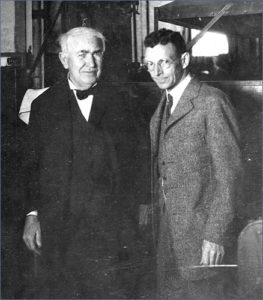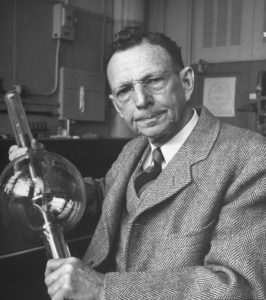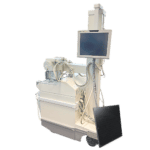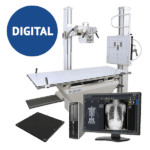Wilhelm Conrad Röntgen’s and the discovery of X-Rays on Nov. 8th, 1895

Today is the International Day of Radiology, coinciding with Wilhelm Conrad Röntgen’s discovery of X-Rays on Nov. 8th, 1895. In honor of today, we’ll focus on an important contributor to the radiology industry: William David Coolidge.
Coolidge was a physicist and engineer, born on October 23rd, 1873 in Hudson, Massachusetts. Showing an early love of all things electrical, he spent his early years working in his town’s machine shop. This experience was an essential foundation for his later research and experiments.
After studying electrical engineering from 1891 to 1896 at MIT, Coolidge traveled to Germany, where he studied until receiving his Ph.D. from the University of Leipzig in 1899. Afterwards, he taught at MIT until 1905, and then became a researcher at General Electric, where he made a breakthrough in 1908: ductile tungsten filament used in electric light bulbs.
His invention involved working the brittle metal tungsten while it was still hot, in order to coil it into wires even thinner than a human hair. The new filaments were ultra thin and durable, and were revolutionary for the lamp industry. They were also much less expensive to produce than previous light bulbs, and were especially great for moving cars, trains, as well as more powerful and portable X-Ray equipment.
In 1913, Coolidge developed theX-Ray tube that would become his most famous invention. Coolidge worked with hot tungsten filament once again with the X-Ray tube, replacing the cold aluminum cathode previously used. This “Coolidge tube” has an improved cathode for X-Ray machine use, and was patented three years later in 1916. It became the basis for the modern X-Ray tubes used today. With it, doctors are better able to visualize deep rooted anatomy and tumors.
Get Started
Request Pricing Today!
We’re here to help! Simply fill out the form to tell us a bit about your project. We’ll contact you to set up a conversation so we can discuss how we can best meet your needs. Thank you for considering us!
Great support & services
Save time and energy
Peace of mind
Risk reduction
Dr. Coolidge later became the vice president and director of research for GE in 1932. During his reign, the sodium vapor lamp, high quality magnetic steel, improved ventilating fans, and the electric blanket were all introduced. Even after he retired from GE, he continued to serve as a consultant and director emeritus, even into his advanced years. In fact he was known to be incredibly active both physically and mentally well until his death at the age of 101.

In all, Coolidge held 83 patents and was the recipient of numerous awards and honorary degrees, including an honorary M.D. degree awarded by the University of Zurich in 1937 due to his contributions in the field of applied physics in medical sciences. He also received the Rumford Medal of the American Academy of Arts and Sciences for his tungsten filament, as well as the Howard N. Potts Medal of the Franklin Institute for the Coolidge X-Ray tube.
Dr. Coolidge was known as a shy and mild mannered man, always pleasant and described by colleagues as a “delightful companion.” He shied away from the spotlight, preferring to mentor his young assistants in their scientific research. For his 100th birthday on October 23rd, 1973, employees of GE presented Coolidge with a gargantuan birthday cake, complete with 100 ductile tungsten lamps and an X-Ray tube perched on top. And for his 101st birthday he received another present: a 100-page biography entitled “William David Coolidge – A Centanarian and His Work” by Dr. Herman A. Liebhafsky. Dr. Coolidge was inducted into the National Inventors Hall of Fame in 1975, shortly before his death on February 3rd.
William Coolidge really did live an incredible life, dedicated to continually improving medical technology and especially radiology. Continue the International Day of Radiology celebration with Amber Diagnostics by reading about other radiology giants we’ve featured on our blog: Sir Godfrey Hounsfield, the inventor of the CT scanner; Elizabeth Fleischman-Aschheim, who crushed gender norms to become the first radiologist in California; Renaissance man Charles Dotter, who is called the ‘Father of Angioplasty’; Cesare Gianturco, who developed the Gianturco coil, which is used to stop internal bleeding and to block tumor’s blood supply; the incredible Nikola Tesla, who made contributions not only to radiology but to almost every other industry; and Felix Bloch, E.M. Purcell, and Raymond Damadian, who developed the MRI machine.



